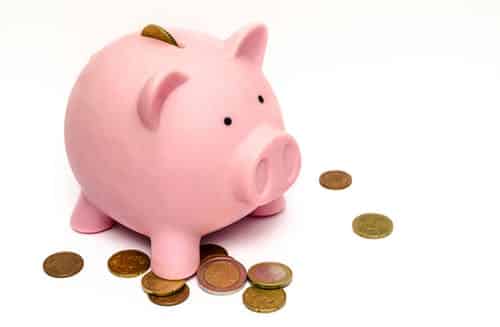Filing for bankruptcy around tax season can bring up the question regarding what happens to your tax refund during bankruptcy. Your tax refund is the amount that you have essentially overpaid in taxes throughout the year. Many people choose to pay more in taxes throughout the year and receive a tax refund during tax season. This also helps to avoid the possibility that you will end up owing money on your taxes when tax season comes around. Many people rely on their tax refund in order to pay off debts or bills, so it can be especially important to understand how your tax refund may be impacted during your bankruptcy.
Filing for Bankruptcy
Filing for bankruptcy has been shown to provide a multitude of benefits. It can help to provide you with an alternative that will allow you to pay off your debt. However, filing for bankruptcy certainly has its drawbacks as well. If you are considering filing for bankruptcy, it is incredibly important to consult with a legal professional to determine precisely how the bankruptcy will impact your situation and your life. Here at LeBaron & Jensen, we specialize in providing superior guidance to help you throughout the bankruptcy process. There are multiple types of bankruptcy and the various types of bankruptcy may impact taxes differently. The most common types of bankruptcy for individuals to file are chapter 13 bankruptcies and chapter 7 bankruptcies.
Chapter 13 Bankruptcy
In a chapter 13 bankruptcy, a repayment plan is designed to allow you a reasonable way in which to pay off your debt. In this situation, some assets are protected, which means that you will likely be able to keep your home and car. However, a chapter 13 bankruptcy requires that you use all of your disposable income to pay off your debt. In a chapter 13 bankruptcy, some debts may be dischargeable, which often means that you aren’t paying back the entire amount of your debt. Some debts, like student loans, may not be considered unsecured debts and they will be required to be paid in full.
Tax Refunds in a Chapter 13 Bankruptcy

Chapter 13 bankruptcies generally require you to spend all of your disposable income on paying off your debt. In these situations, tax refunds are often considered disposable income. Though it is largely up to the court, in the majority of cases, you will be required to surrender your tax refund in order to pay off your debts. Unfortunately, this won’t lower your ordinary plan payment. If your repayment plan doesn’t completely cover the same value that you owe, it is likely that the court will require you to put your tax refund toward paying back these debts.
Alternatively, if you owe money on your taxes, it can be beneficial to file for a chapter 13 bankruptcy. Your tax debt may be considered unsecured debt, which may be able to be discharged through the bankruptcy process. Discuss with your legal professional to determine how your tax refund will be impacted by a chapter 13 bankruptcy.
Chapter 7 Bankruptcy
A chapter 7 bankruptcy gathers your unprotected assets into a bankruptcy estate. Any unprotected assets are liquidated in order to pay back your debts. These assets will be distributed by a designated trustee, which will provide you with little influence over their distribution. Since assets are distributed by a trustee, it will largely be up to the court to determine what happens to your tax refund.
Tax Refunds in a Chapter 7 Bankruptcy
Tax refunds are often handled somewhat differently in a chapter 7 bankruptcy. In most situations, what happens to your tax refund will depend primarily on when the tax refund was earned. If the refund was earned for the work that you did before filing for bankruptcy, it is likely that it will be required to go to your bankruptcy estate, unless it is protected with an exemption. However, if it was earned after you filed for bankruptcy, it is possible that the individual may be allowed to keep their tax refund. This can become complicated depending on when the tax refund is earned and bankruptcy is filed. It may become necessary to split the tax refund between the individual and the bankruptcy estate, depending on the situation. The ultimate decision will be determined by the court.
How to Save your Tax Refund
There are a few ways that you may be able to save your tax refund throughout your bankruptcy. You may be able to keep your tax refund by waiting until after you have received it to file for bankruptcy. In these situations, you will likely want to spend it before you file for bankruptcy. Keep in mind that it should only be spent on necessities. Purchasing luxuries will be problematic for your bankruptcy process. Exemptions may allow you to protect your tax refund. Some states allow for a “wildcard exemption” which can help to protect any asset of your choice. In addition, if you don’t receive a tax refund, you don’t have to worry about protecting it. This can be done by adjusting your tax withholding. This will take less money out of your paycheck, which may ease the financial strain of the repayment plan. However, if you choose to do this, you will need to save up some extra funds in case you end up owing money on your taxes.
Here at LeBaron & Jensen, we specialize in the field of bankruptcy law. Our experienced, professional team can provide you with the information and guidance that you need to obtain the best possible outcome for your bankruptcy process. Filing bankruptcy comes with a substantial amount of legal and financial consequences, so it is vital to consult with a professional when you consider filing for bankruptcy. To obtain more information regarding how your bankruptcy will impact your tax refund, contact our experts at LeBaron & Jensen today!


